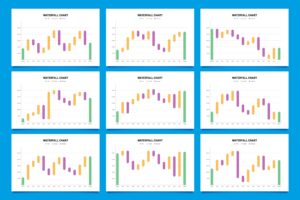A trading journal can be your most powerful tool as a trader. Whether you’re a beginner or seasoned pro, the practice of maintaining a trading journal offers insights, control, and clarity like no strategy ever can. By tracking decisions, emotions, and outcomes, a trading journal sharpens your edge in a volatile market. Repeating common mistakes is a major reason traders keep losing money. A journal can stop that cycle.
Let’s find out how a trading journal boosts clarity and strengthens your trading mindset.
Table of Contents
Why a Trading Journal Is a Game-Changer
A trading journal is more than just a log. It’s your personalized blueprint for growth. Every journal note captures your mindset, trading habits, and lessons from past results.
Words like “moreover” and “in fact” bridge your decisions and your mindset clearly. Over time, the journal evolves into a detailed mirror reflecting your habits—both good and bad.
For example, you might notice that every time you trade after 3 PM, you make impulsive choices. Without a trading journal, this pattern might go unnoticed.
Also Read: Stock Market Basics
How a Trading Journal Builds Mental Clarity
The act of writing things down forces clarity. Each trade, when recorded in a trading journal, becomes a moment to learn.
You become aware of your mental triggers. Were you anxious during the trade? Was it based on a hunch or a solid setup?
Writing reinforces discipline. Instead of reacting emotionally, you start acting with intention. This consistent process reduces overwhelm and brings laser-like focus to your trading sessions.
Also Read: Stock Exchange
Trading Journal Structure That Actually Works
The Emotional Snapshot Field
Include a section to describe how you felt before taking the trade. This creates a record of your emotional state and links emotions to trade performance.
The Strategy Verification Field
Record the strategy used and why it was chosen. Was it based on a setup you’ve backtested? Or just a gut feeling? Be honest.
Also Read: Trend Reversal
Trading Journal Benefits You Can’t Ignore
Keeping a journal helps in countless ways. Let’s break down the most impactful ones:
- Better discipline means you trade only setups you can explain on paper.
- Pattern Recognition: You spot what’s working and what’s not.
- Accountability: You stop blaming the market and take full responsibility.
- Reduced Emotional Trading: Recognizing repeated emotional triggers helps control them.
- Growth Mindset: You treat trading as a craft, not gambling.
Even if you’re losing, your journal becomes a treasure chest of data that helps you turn the tide
Also Read: Hedging
Discover how journaling keeps your mindset clear, confident, and emotionally balanced in trading
Let’s uncover what gives successful traders an edge over those who struggle.
Secret 1 – Emotional Mastery Through Reflection
Secret 2 – Confidence Through Evidence
Checking steady progress in your journal builds stronger belief in your trading skills. Confidence doesn’t come from motivation. It comes from documented consistency.
Secret 3 – Focus Through Preparation
When you write a clear trade plan before execution, distractions fade. Preparation builds inner calm. Your journal becomes your battle plan.
Also Read: Moving Averages
Real Examples: How Traders Use Their Journals
Let’s look at real-world uses of a trading journal:
Anna, a day trader, noticed she performed worse after skipping breakfast.
David, a swing trader, spotted he exited trades too early when he checked charts obsessively.
Without a journal, they’d repeat these mistakes.
Now, both use their journals to set personal rules, like not trading hungry or reducing screen time after entry.
Also Read: Support & Resistance
Tips to Make the Most of Your Trading Journal
Write entries immediately after each trade
- Be brutally honest, not just optimistic
- Review entries weekly for trends
- Use digital tools or handwritten notebooks, whatever suits you best
- Color-code emotions or setups for visual clarity
Also Read: ETFs Treasure
Digital vs. Physical Trading Journals
A physical notebook encourages reflection. The act of writing slows down your mind.
Digital tools, like Excel or Notion, offer data analysis and easy tracking. Use whichever method ensures consistency. Some traders even use both.
Also Read: Bull Market Surge
The Best Time to Update Your Trading Journal
Also Read: Double Bottom
Common Mistakes to Avoid in Your Trading Journal
- Being vague (e.g., “I felt good”)
- Only journaling winning trades
- Skipping emotional analysis
- Ignoring setups that you almost took
- Not reviewing your journal weekly
Avoiding these traps keeps your journal meaningful and transformative.
Also Read: Double Top
How to Stay Consistent with Your Trading Journal
Treat it like brushing your teeth—essential and non-negotiable.
Use reminders, habit trackers, or rewards. The real reward, though, is the awareness and growth you’ll gain.
Consistency is what turns journaling into results. Just five written lines per trade can bring noticeable improvement.
Also Read: Gift Nifty
FAQs: Trading Journal
What is a trading journal?
It tracks entries, exits, strategies, emotions, and the result of every trade. It helps identify patterns and improve performance.
How frequently should you log trades and thoughts in your trading journal?
Should beginners use it?
Yes, it strengthens discipline and boosts self-awareness right from your first trade.
Is a digital trading journal more effective than using a paper version?
Can a trading journal really make me a better trader?
Also Read: Top & Bottom Signals
Final Thoughts: A Trading Journal Changes Everything
In volatile markets, your journal serves as a calm and steady reference point. It helps you make thoughtful trading choices instead of acting on impulse. It helps you realize that your toughest trading challenge is often your mindset.
This small routine boosts your trading with not just data, but clarity and courage.
Also Read: Smart Money Concept







